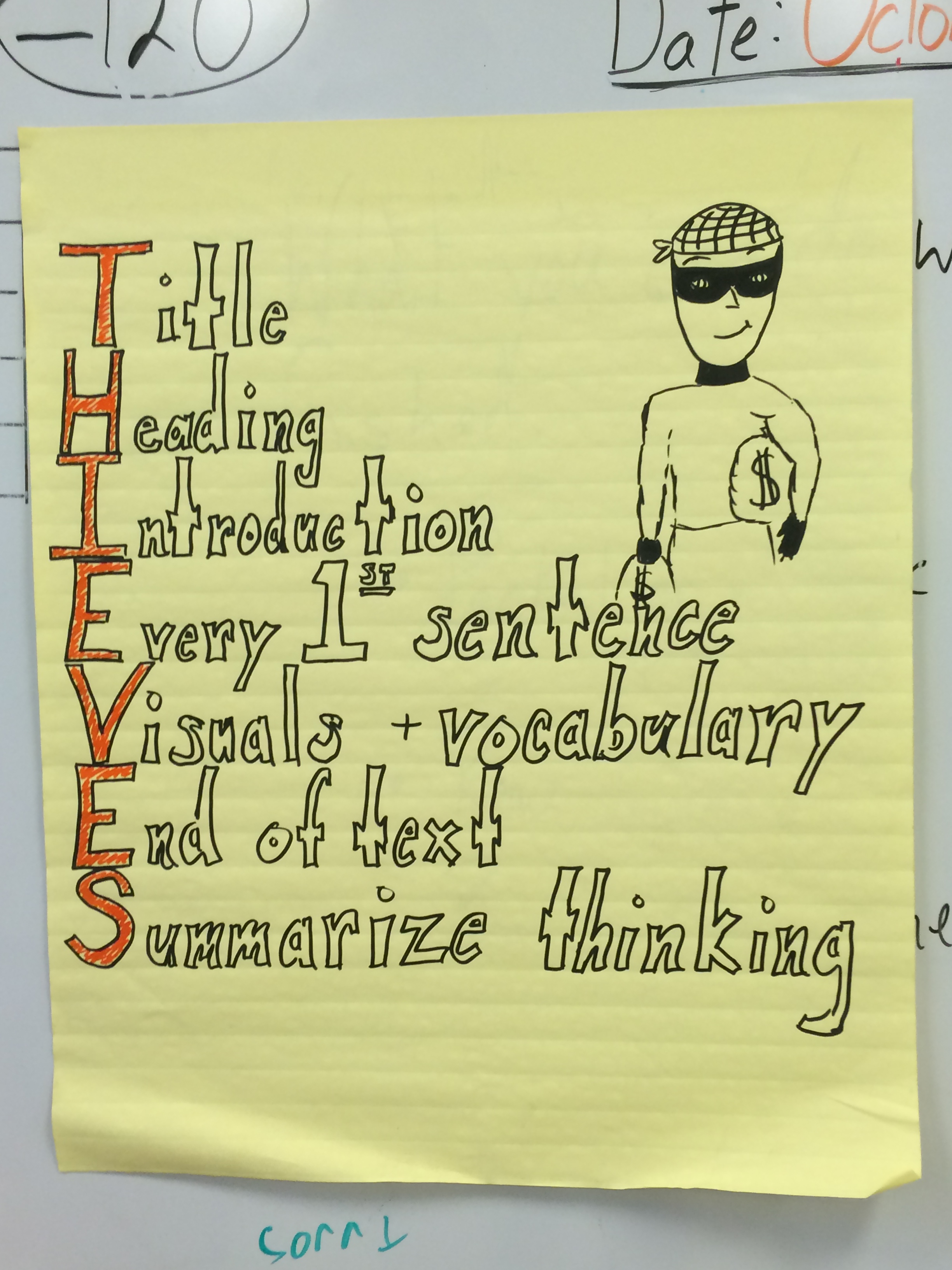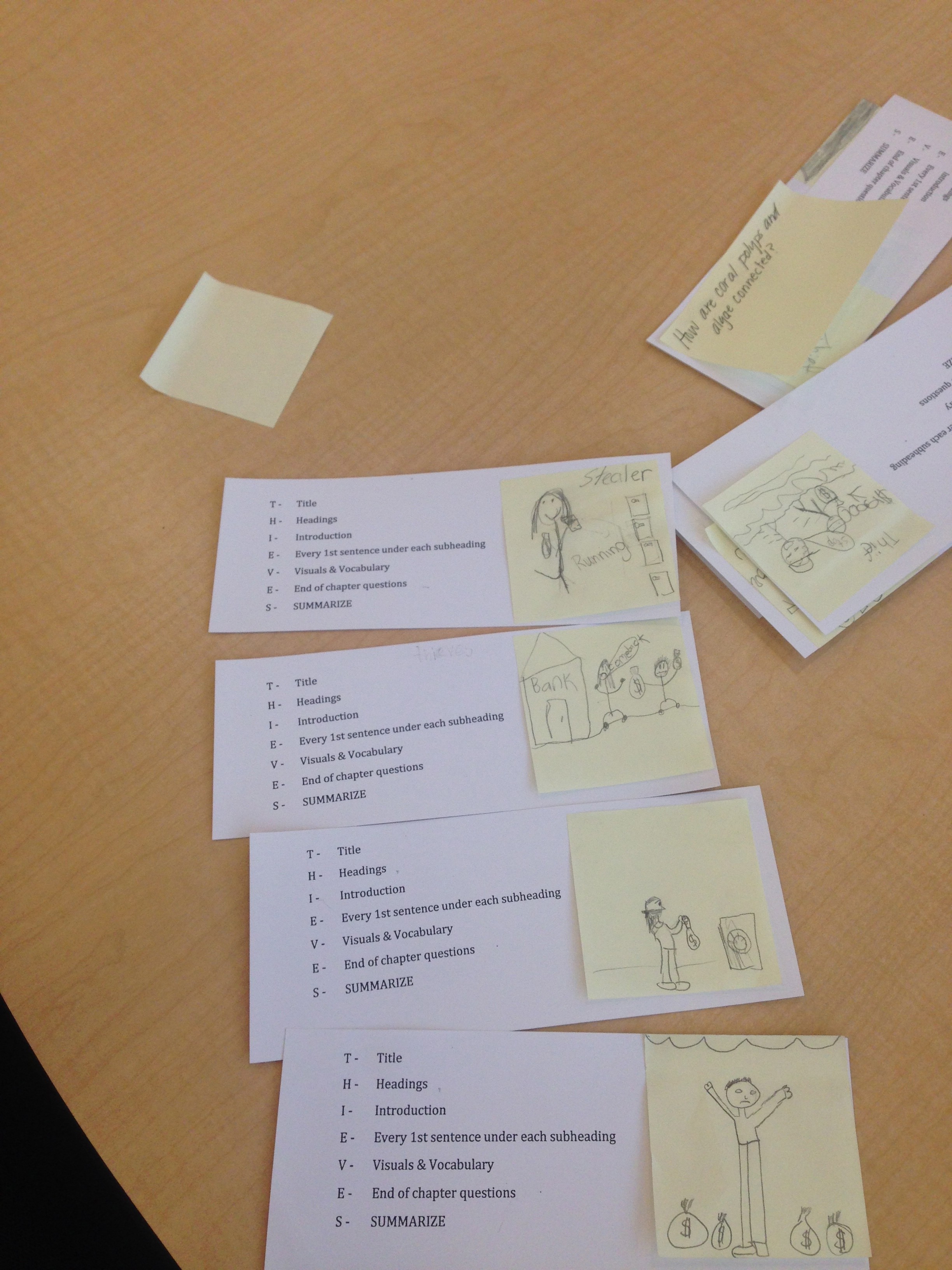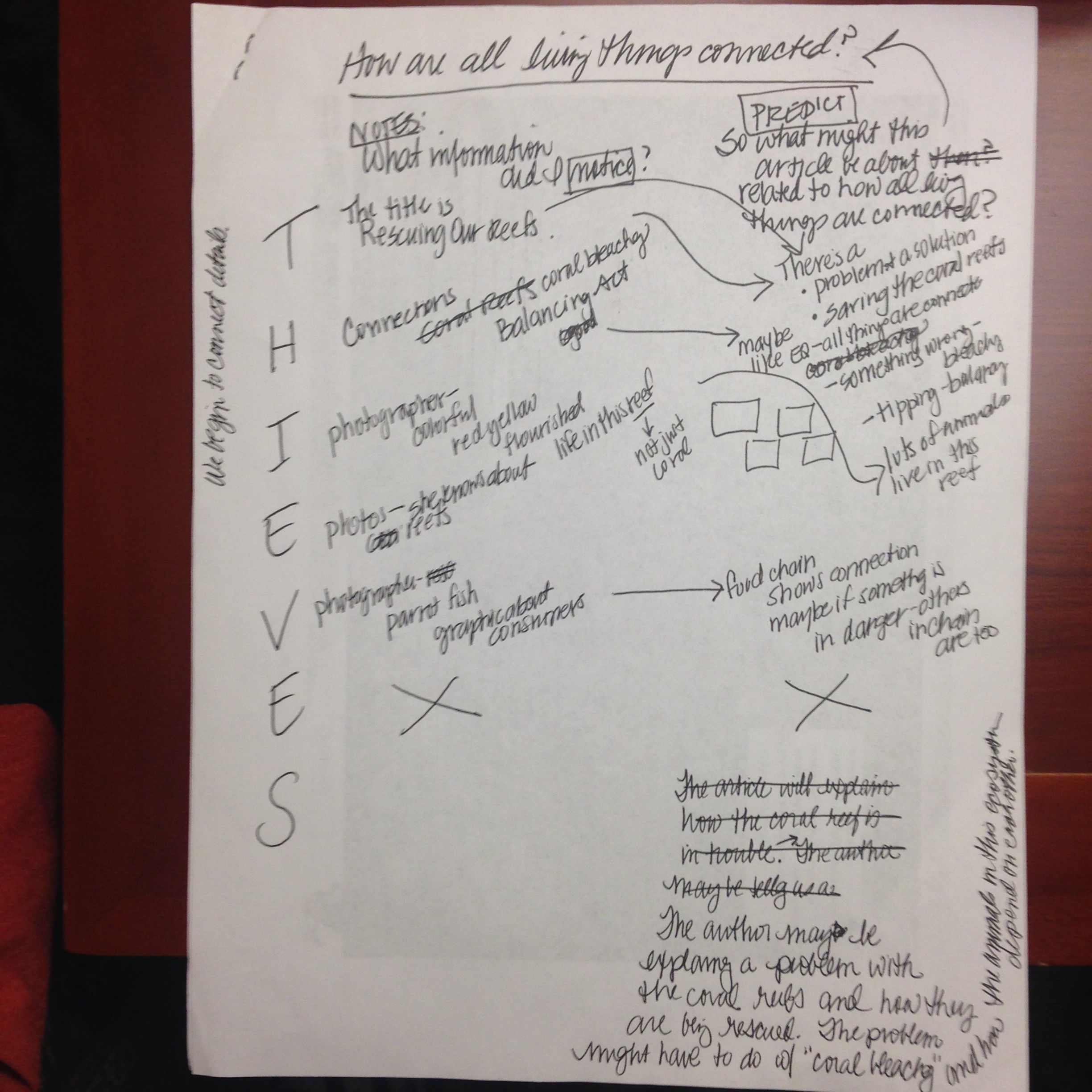
Last week I taught several demonstration lessons for students on how to use the mnemonic THIEVES (Manz, 2002) and as I taught the same lesson over and over, I made some surprising and significant shifts in how I use this activity based on the needs of the students and the pitfalls of the texts.
THIEVES is a mnemonic students can use to help them make informed predictions about an informational text they will be reading, specifically about the main and central ideas that will most likely be addressed in this text. Each letter in the word THIEVES reminds students to preview a particular aspect of the text – title, headings, intro, etc.
What is THIEVES? (A quick reminder)
If you are unfamiliar with THIEVES, it is a great way to help 3rd-8th grade students make informed (deep, not superficial) predictions about what they will be learning in a text. I generally introduce THIEVES by asking the students to quickly sketch what they think of when they hear the word “thief” and then ask them to explain their sketch to a partner. Then I introduce the concept of a thief as a person who “wants to get ahead.” This person feels like they need something that they don’t have. In the same way, readers can be thieves, they can get ahead of the author by previewing the text and making an informed prediction. I give the students bookmarks they can place their sketches on (to be laminated later and used over and over again). See sample anchor chart and bookmark below. (If you’re not comfortable with this mnemonic, try HIP or TELL.)


With the bookmark as a reminder, students can start by looking at the TITLE of a text and thinking about what information it provides. Then they can look at the HEADINGS and think about not only what information they provide about the text, but also how they connect to the Title. The idea is to make connections between the title, headings, and other elements of the text that are previewed and then “summarize” (and synthesize based on everything you’ve predicted) what you think the author’s main ideas will be. If you are teaching with an essential question – even better. Ask students to think about the essential question and how the elements they are previewing might be related.
When does THIEVES fall apart? UGH!
In the past, I was very linear in my approach to THIEVES – first you look at the title, then the headings, then every first sentence in each section and so on and so forth. But this is TROUBLE. I always try to do demonstration lessons with texts the classroom teacher is already using. Last week, I ran into texts with titles that did not really identify what most of the article would be about (like an article entitled Saving our Reefs which is mostly informational text about reefs and very little information about the act of saving the reefs) and headings that were idioms (e.g., Taking Root, Growing in Place, ugh!!!) and I was working with students who did not have the stamina for careful reading of every first sentence. We were also working with texts they did not have a lot of background knowledge on like the beginning of the American Revolution and the demise of the coral reefs.
Teach the readers, not the strategy.
So I adjusted – because I’m teaching the readers, not the activity/strategy, right?
1) I made sure to model thinking aloud about the title. I just jumped in and did this.
2) Instead of moving to headings (or just after previewing the headings if I thought they would be helpful), I reminded the students, “There are lots of ways to be a thief when previewing a text. Let’s look at the mnemonic again. (Pause.) Why don’t we look at the visuals?”
WHY DOES LETTING GO A LITTLE WORK BETTER? Conceptually, I want the students to understand there are many ways to preview a text. If looking at the subheadings is not helpful, then what else can you do?
One last thought – I had to read the texts in advance and take notes about how THIEVES would work or not. (See my notes below.) This (and the students’ responses during the lessons) helped me realize the pitfalls of elements in the text–how some would not be helpful. I realized which elements of a text would be helpful in making informed predictions and which ones wouldn’t (e.g. subheadings that are dated idioms :().

Check out this post if you want to learn more about teaching a lesson with THIEVES.
AND a special THANKS and KUDOS to the teacher who designed the anchor chart at the top! Woohoo!
Hope this helps.
S
REVISED 8/8/2025
